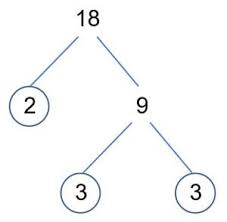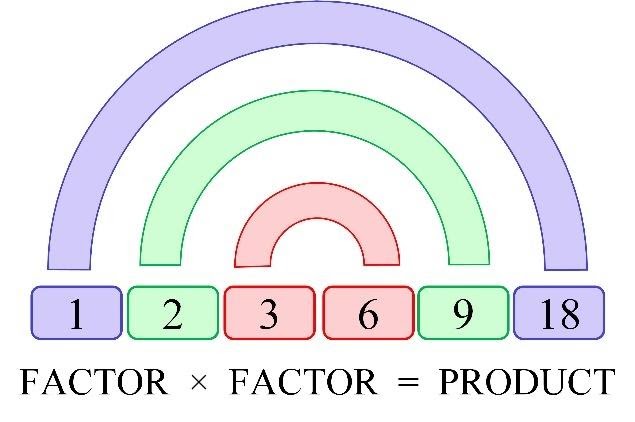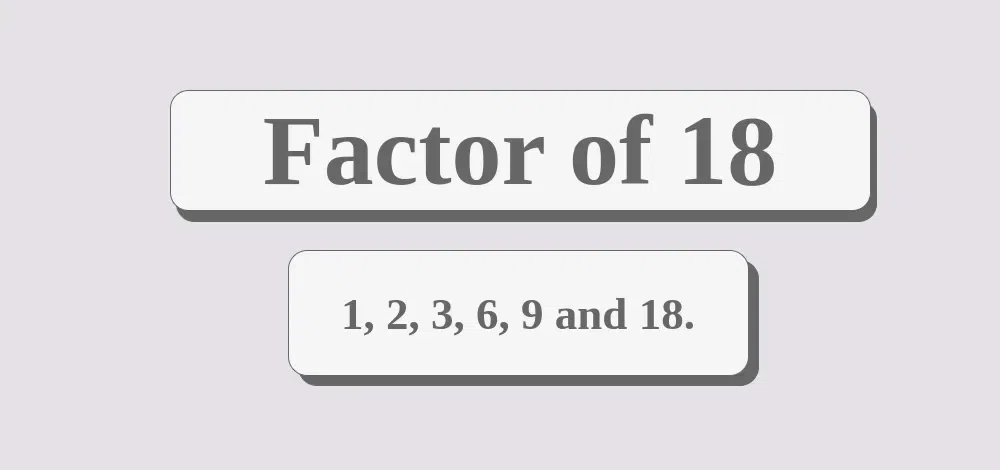Introduction to factors of 18
Have you ever wondered what factors really are and why they matter? Whether you’re revisiting high school math or diving into number theory for the first time, factors are at the heart of many mathematical concepts. In this article, we’ll break down the factors of 18 in detail, exploring their significance, practical applications, and even some fun trivia. Let’s dive in!
What Are Factors, Anyway?
Before we zoom in on 18, let’s take a moment to understand the basics of factors. Factors are numbers that can divide another number without leaving a remainder. Think of them as the building blocks of a number. For instance, the factors of 10 are 1, 2, 5, and 10, because each of these numbers divides 10 evenly.
Why Are Factors Important?
Factors play a critical role in various fields, from mathematics to engineering. They help us simplify fractions, find patterns, and solve equations. Understanding factors also lays the foundation for more complex topics like prime factorization and greatest common divisors.
How Do You Find Factors?
Finding factors isn’t as tricky as it sounds. To identify the factors of a number, you divide it by smaller numbers starting from 1 and check if the result is a whole number. For example, when you divide 18 by 2, the result is 9, which makes both 2 and 9 factors of 18. Simple, right?

Listing the Factors of 18
Now that we’ve got the basics down, let’s focus on 18. What are its factors, and how do we find them? By dividing 18 by various numbers, we discover the following:
The Factors of 18
The complete list of factors for 18 is: 1, 2, 3, 6, 9, and 18.
Breaking It Down
- 1 and 18: Every number has 1 and itself as factors. These are called universal factors.
- 2 and 9: Since 18 is an even number, it’s divisible by 2. Dividing 18 by 2 gives 9.
- 3 and 6: Dividing 18 by 3 gives 6. Both 3 and 6 are whole numbers, making them valid factors.
Visualizing Factors
To make things more intuitive, you can visualize factors as pairs. For 18, the factor pairs are:
- (1, 18)
- (2, 9)
- (3, 6)
Each pair multiplies to give 18, reinforcing their validity as factors.
Exploring Prime Factors of 18
When we think about factors, prime factors often come to mind. These are factors that are also prime numbers. Prime numbers, as you might recall, are numbers greater than 1 that are divisible only by 1 and themselves.
Prime Factorization of 18
To find the prime factors of 18, we break it down into its smallest building blocks:
- Divide 18 by 2 (the smallest prime number), which gives 9.
- Next, divide 9 by 3 (another prime number), which gives 3.
- Finally, divide 3 by 3, which gives 1.
So, the prime factorization of 18 is 2 × 3 × 3 or 2 × 3².
Why Does Prime Factorization Matter?
Prime factorization has practical applications in cryptography, computer algorithms, and even biology. It’s a way to see the “DNA” of a number, showing how it’s constructed from primes.
Applications of Factors in Real Life
You might be wondering, “Why should I care about factors outside of a math class?” Surprisingly, factors have plenty of real-world applications. Here’s how they come into play:
Simplifying Fractions
Factors are crucial for simplifying fractions. For example, if you have the fraction 18/24, you can use the greatest common factor (GCF) of 18 and 24, which is 6, to simplify it to 3/4.
Problem Solving
Factors help solve practical problems, such as dividing items into equal groups. For instance, if you have 18 candies and want to split them evenly, you can use the factors of 18 (like 2, 3, or 6) to determine your options.
Geometry and Patterns
In geometry, factors assist in determining dimensions. If you’re designing a rectangle with an area of 18 square units, the possible dimensions (in whole numbers) are derived from its factor pairs, such as 3 × 6 or 2 × 9.
Fun Facts About the Number 18
Numbers are more than just math; they carry cultural, historical, and symbolic significance. Here are some fun tidbits about 18:
A Symbol of Life
In Jewish tradition, the number 18 is symbolic of “chai,” which means life. It’s often associated with good luck and blessings.
Sports and Games
In golf, 18 is the standard number of holes on a course. It’s also a common number in dice games, where rolling a total of 18 (three sixes) is a rare and celebrated event.

A Milestone Age
In many cultures, turning 18 marks the transition to adulthood, bringing new rights and responsibilities.
Conclusion
The factors of 18 might seem like a simple topic, but they open the door to a fascinating world of numbers. From basic division to real-world applications and even cultural symbolism, factors are everywhere. Understanding them not only enhances your math skills but also gives you a new appreciation for the numbers we encounter daily. So, the next time you see 18, remember its factors and the stories they tell!



